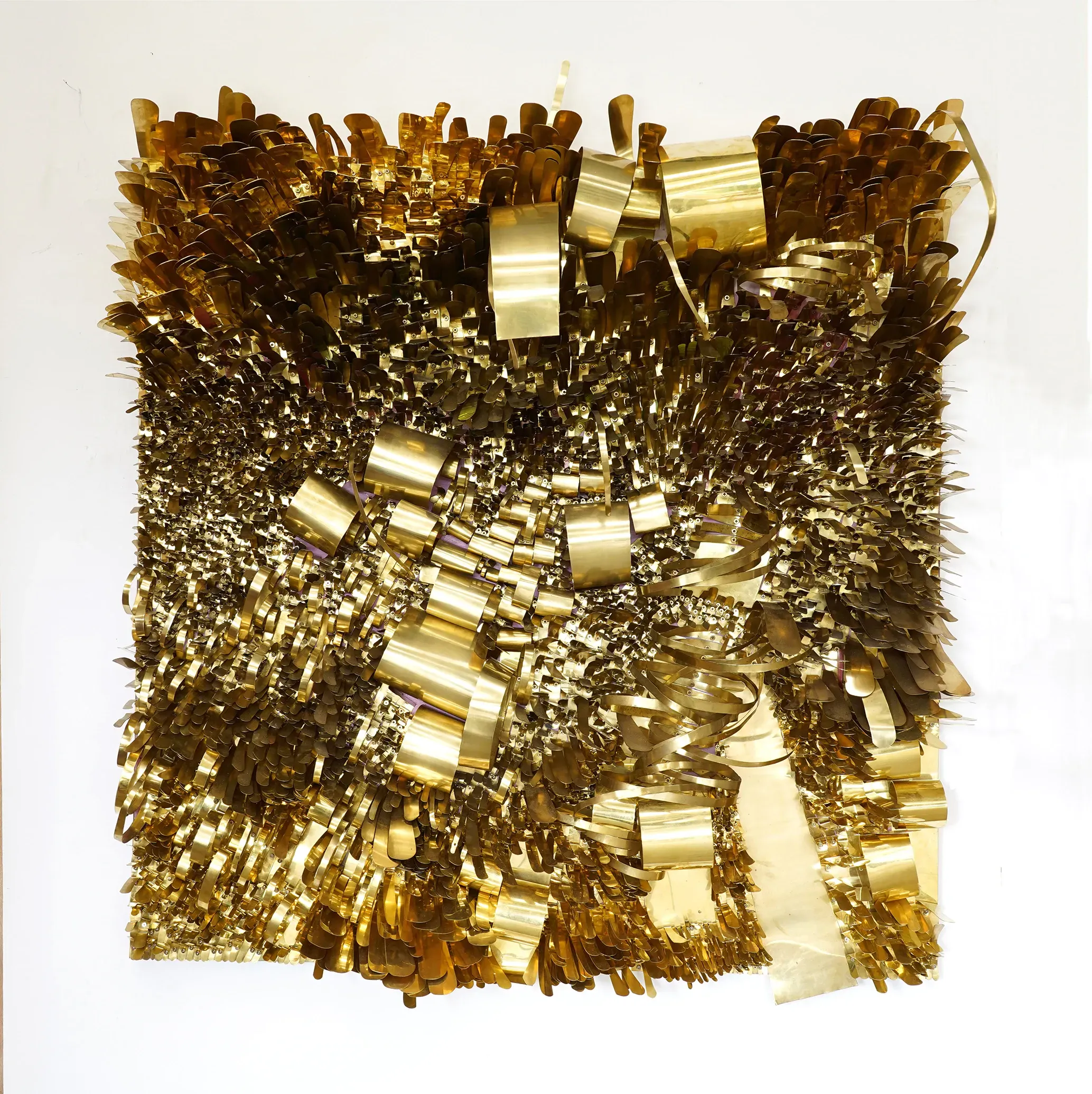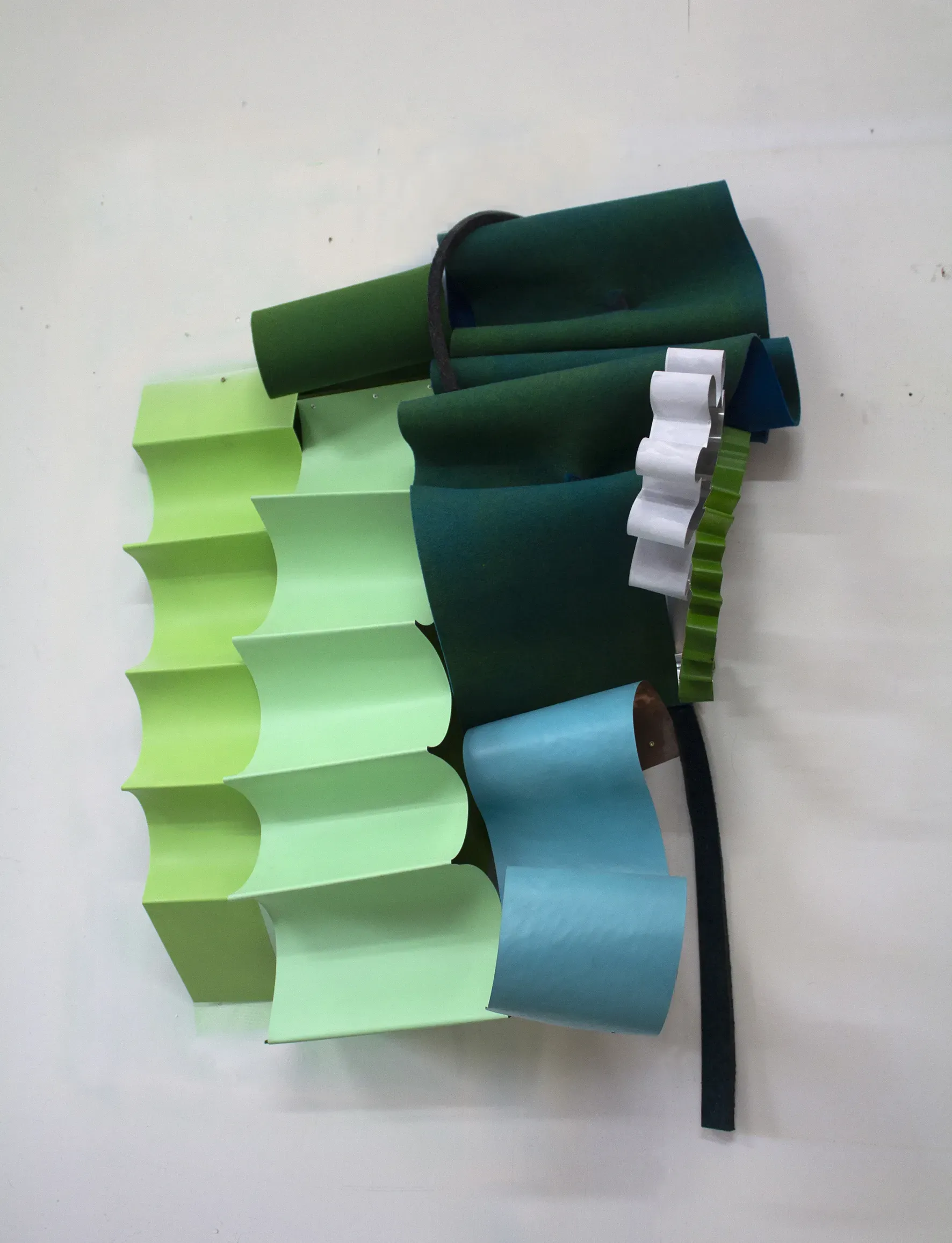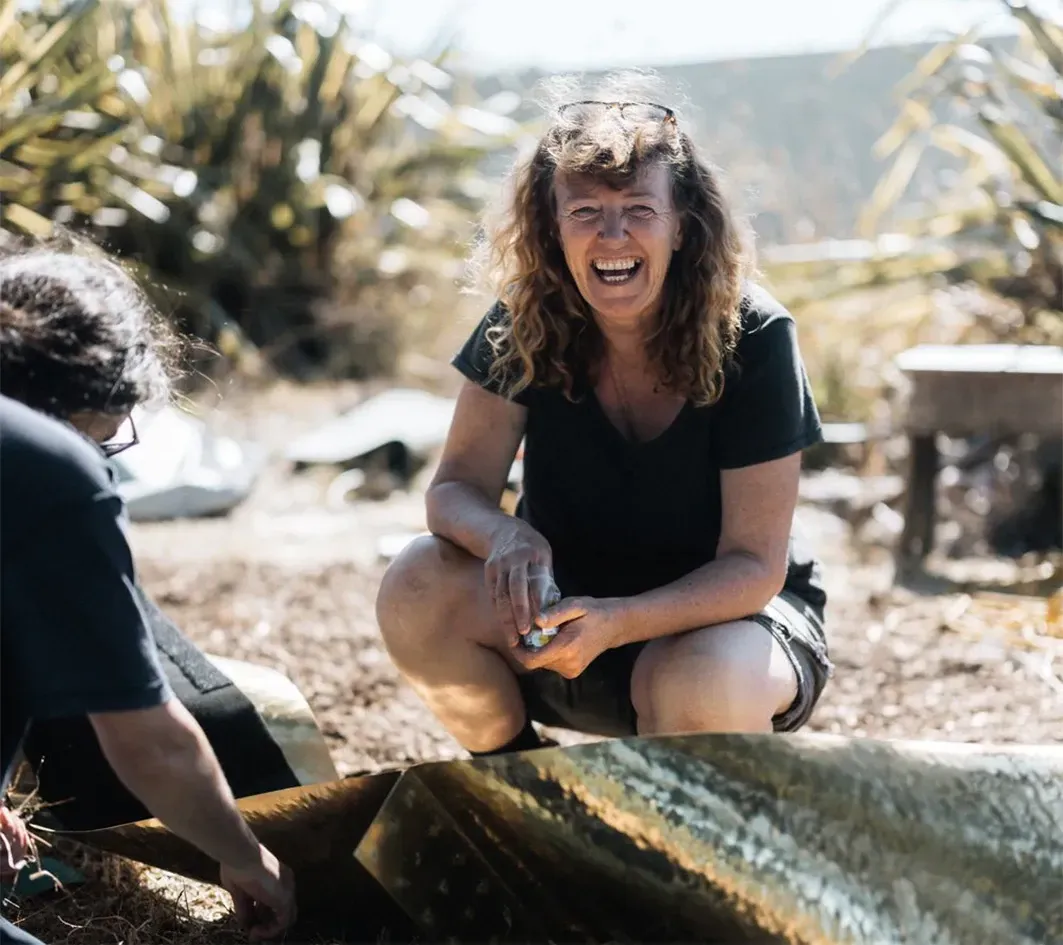Hurricane Lizards And Plastic Squid

Louise McRae, an award-winning artist from the Kaipara Coast, has it all figured out.
Start with an arresting title to your exhibition. Check. Make it creative as, with humour and a sense of the extraordinary too. Done. Have it supported by a strong intellectual armature of ideas. Yes. And of course, make the work visually compelling, approaching the numinous, the mysterious, too. Absolutely.
McRae’s new exhibition Hurricane Lizards and Plastic Squid opens this Saturday (12 November) at Matakana’s WRW & Co Showroom, running until 27 November.
'Art found me'
As the artist herself details of her creative origins: “My young life was spent on isolated land on the Kaipara Harbour, riding the coast with the birds imagining my world.
“Years later, art found me. I became interested in material, how it operates, the moment it fails.”
Art more than found McRae: she added to her innate abilities with a masters degree in Fine Arts from the Whitecliffe College of Art & Design in Auckland.
McRae continues the story of her fine arts journey: “I began as a painter and have been interested in pushing out into the world - it’s a wild and fascinating place, full of remarkable events, so much evidence of people, creatures and plants adapting and working in complex relationships to thrive in adverse and changing conditions.
“The unlikely and strange combinations that evolve into something successful are of great interest to me.”
This, naturally, is perhaps a bigger vision than paint on a 2D surface can provide. So McRae went searching further. “I have a personal relationship with material and its particular properties, I enjoy the link between the process of making and the process of living.
“The challenge of following curiosity, excitement tips into vulnerability and hopefully, distils into a kind of knowing - a wisdom. Satisfaction comes when all the elements come together in a kind of alchemy, the work sings with intention and the piece is more than the sum of its parts.

Louise McRae, Naturgemalde. Image: Supplied.
“I want the works to express a coming together of the unlikely, in a successful interdependence. As a way and to remind myself of the deep connection we have to the world, to others. I start with my personal relationship to material and use the combination of its particular properties, how that translates in touch, how it responds to action. Playing around, add natural force *gravity) rolling down, unrolling up, folding up, unfolding in, sharp creases and complex curves layered and played with until life begins to breathe in the piece.”
A big artistic ambition, but – “Moving away from traditional practice opens up opportunity...
“I see myself as a threshold-bender, and set myself some parameters to ensure the work has some synergy. For example, purposefully avoiding domestic materials - rather using material from industrial practises - instills a feminist thread and opens up opportunities to develop and invent techniques.
To detail further, “A thick industrial felt from the engineering industry is incredibly absorbent, so paint refuses become skin, as on canvas. It is absorbed into the wool and becomes part of the felt. This does unusual things to the colour and stiffens the folds so the paint becomes a structural element. Shuffling the hierarchical order of how to paint, or how to make and which thing does what charges the piece with energy.”
Materials matter
This re-definition is an integral part of McRae’s work.
“Material offers an honesty I’m looking for in life. To honour that I avoid adhesives and hidden fastenings, I want the works to hang together, be of themselves without secret attachments.
“The frames, armatures, plinths are seen, they offer some necessary structure but are not covered or exposed – they are part of the work. Which brings vertical and horizontal lineal elements (grid) that contrast the organic loops and in some instances the rigid frame echoes the rich folds of the soft material which in turn adds another layer, all the parts supporting each other in the alchemy of unlikely combinations working together.”
As she alluded to earlier, McRae’s early life has a direct bearing on all this.
“We lived remotely. With my brothers older than me, I had a horse for company and would spend hours riding the coastal cliffs, watching sea birds travel miles along the coast drifting on the updrafts. If you watch for long enough, you can easily imagine flying.
“I wasn’t able to socialise with my peers often, so I imagined worlds as I rode. I didn’t realise it then, but the isolation, the aloneness and that sense of freedom set me up for adventure.
“After some time pursuing adventure out in the world, and when art found me, I discovered an internal adventure. These days when I’m working, I tap into that feeling and it guides me to take risks. To try things out, to test, to try another way. "

Louise McRae. Photo: Supplied.
From an essay supporting her new exhibition, by Claire Ulenberg, “Louise McRae has a fluid art and spatial sculpture practice encompassing many areas of the material world. An alchemist of materials, she transforms one form into another unexpected form, bringing a sense of wonder, intrigue, and hope.
“In her work, Louise McRae investigates our relationship to the object world.”
Bringing a Venice mentality to Matakana
Ulenberg is a curator specialising in the great artists of New Zealand’s future. She knows her stuff, having worked at the world’s premier arts show, the Venice Biennale – once for the Australian Pavilion and next for the New Zealand presence - as a curator of public sculpture and outdoor exhibitions and as the Art Manager at Sculpture on the Gulf on Waiheke Island earlier this year.
Together McRae and Ulenberg will do great things, I reckon.
Ulenberg combines an arts management and curatorial vision based on experience of an international scale – which she can apply to emerging Aotearoa artists.
“Working in Venice at the Biennale and being among some of the world's most compelling, ambitious and thought-provoking artists was a dream come true.
The installations from different countries are of such a high presentation standard, as expected from the world’s oldest and most prestigious international art exhibition (dating back to 1895).
“While working with the Australian Pavilion, I was fortunate to spend six months living in Venice and was able to witness the variety of visitors to this huge exhibition - from astute art professionals and art world denizens, to groups of students and those who visit more as sightseers, I realised perhaps conceptual art was not really of interest to some of these people.
“I once had a visitor decide it would be hilarious to jump onto one of Hany Armanious’ sculptures! Protecting the artwork I had to yell, ‘Basta! pericoloso, non toccare!’ We shooed the portly scoundrel out of the Pavilion. He laughed, saying we had no sense of humour.”
This mix of the milieu of high art and the rough-and-real world has set her up well: “Returning years later and working in a different context with Aotearoa artists, reconnecting with Italian friends, colleagues and other international artists, reminded me that art is our essential connective fibre and communication point.
“I love this saying 'il piccolo mondo'. The world is small. It's so true when concerning the art world.
“For a relatively 'new' country in Eurocentric/Venetian standards, Aotearoa has always punched above its weight with our presentations. I hope to return to the Biennale and curate a compelling presentation with talented emerging Aotearoa artists that may not have been given a platform yet.”
'An element of punk'
An admission regarding the comment in the first paragraph of this story. This exhibition’s title is borrowed from a book by conservation biologist Thor Hanson, Hurricane Lizards and Plastic Squid: The Fraught and Fascinating Biology of Climate Change.
Ulenberg notes, “When McRae wrote to Hanson, seeking permission to use his title and enclosed images of her work he responded ‘gorgeous; fascinating at first glance and inviting closer scrutiny, much like the stories I was trying to convey in the book.’”
Ulenberg goes further in her essay, approaching the unexpected in McRae’s works: “There is an element of punk in McRae’s practice arising from her irreverence for what materials are supposed to do and a revolt from classical sculpture. She makes material matter evolve...
“In defiance of what is expected, much in the way the Surrealist artists challenged reason and arranged found objects in bizarre combinations, McRae creates tensions between materials. Encountering the work elicits a physical and emotional response, far from one-dimensional (both in form and in content) and instead, it recalls unconscious sensations and sensual pleasures.”
Like all exhibitions, this one is best simply experienced.
All the while, remembering Ulenberg’s pertinent closing comment about McRae’s work.
“The hurricane lizards and the plastic squid are adapting to a new order, McRae is challenging us, are we up to the ultimatum: can we evolve and adapt to an environment constantly in flux?”

